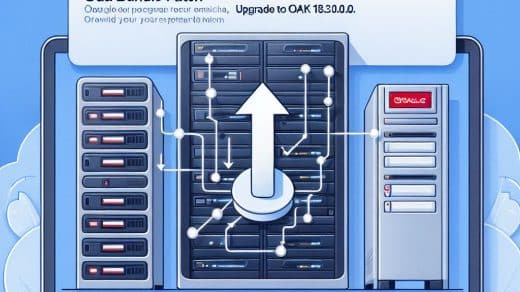Keywords: Oracle database consolidation, Exadata Cloud@Customer, performance tuning, CDB/PDB, Oracle RAC, capacity planning
This post is based on notes from one of my migration projects for a major financial institution. The institution aimed to simplify its sprawling on-premise database landscape with an ambitious goal: to consolidate over 500 critical Oracle databases onto Exadata Cloud@Customer (ExaCC) with minimal disruption. This was a multi-faceted and multi phased project and this migration was part of one phase only.
Initial Challenges
Before the transformation, the IT environment was fragmented:
- 200+ non-CDB 12c instances across scattered bare-metal servers
- Licensing overhead from underutilized hardware
- End-of-support risks for Oracle 12.1
- Poor CPU/memory utilization and inconsistent backups
- Performance spikes during peak windows
Sizing & CPU Planning Strategy
Proper sizing was important part to avoid oversubscription. The approach followed was:
- Collected peak 8-hour CPU stats (avg. 70% of 8 vCPUs per DB)
- Added a diversity factor (typically 0.6–0.7 for mixed workloads)
- Considered consolidation overhead (~15%)
- Accounted for PDB/tenant isolation
- Calculated total vCPU requirement and mapped to ¼ rack ExaCC (X9M)
The base line or example calculation used: 100 CDBs with 3 PDBs each → ~400 vCPU consolidated → 2 x ¼ rack ExaCC nodes (based on max 112 OCPUs per node)
Migration Strategy
Tools Used:
- RMAN for full/incremental backup migration
- Oracle Data Pump for schema lift & shift
- Cross Platform Transportable Tablespaces
- Oracle Golden-Gate for live replication (for custom schema and zero downtime requirement)
Architecture Evolution:
- Shift to Container Databases (CDB)
- High Availability with Oracle RAC & Data Guard
- Centralized patching, backups, and monitoring
Post-Migration Gains
- 30% lower licensing cost via CPU pooling and CDB structure
- Performance boosted: Avg. query times reduced by 40%
- Simplified hybrid cloud management with ExaCC
- Security & compliance with encrypted backups, audit trails, and restricted access zones
My Important Takeaways
- Used performance-based sizing, not 1:1 lift-and-shift
- CDB/PDB model helps maximize consolidation
- Combine diversity factor + overhead buffer for safe capacity planning
- ExaCC is ideal for regulated environments needing on-premise control + cloud agility
Got a similar project in mind? Contact me via LinkedIn or leave a comment!





Recent Comments